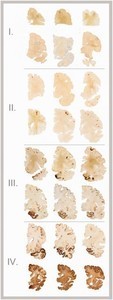Traumatic Brain Injury and Contact Sports
In football, hockey, rugby, wrestling, boxing and other physically grueling contact sports, one has to be a bad ass to survive. The impulsive, aggressive behavior of the male jock is in many ways an accepted, even expected, part of the culture of sports. Heck, even the poor academic performance of some athletes is a running joke at many universities.
What if the impulsive and aggressive displays by these athletes is not cultural but a result of head injury? What if the ‘dumb jock’ wasn’t always dumb, but was made so as a result of repeated blows the head? What if the negative behaviors commonly attributed to male jocks everywhere are legitimate symptoms of traumatic brain injury? This is very real possibility.
Traumatic Brain Injury in Athletes
Repeated blows to the head cause a condition called chronic traumatic encephalopathy or CTE. The early symptoms include all of the same behaviors commonly attributed to male athletes such as: irritability, impulsivity, aggression (explosivity), depression, poor attention and concentration, short-term memory difficulties and heightened suicidality. In younger athletes, traumatic brain injury symptoms look a lot like those associated with Attention Deficit Hyperactivity Disorder (ADHD).
As the disease progresses, aging athletes can experience gait disturbances, Parkinson’s-like tremors, dementia, severe cognitive deficits and impulse control issues. In many cases, affected athletes are even misdiagnosed with early Alzheimer’s. It appears that the all-too-common and often mild head injuries, normal in many athletic endeavors, may be more dangerous than most recognize.
New Research: From the Brains of Men
Researchers from Boston analyzed the brains from a cohort of 85 deceased, male former athletes (n=64) or ex-military (n=21) with histories of repeated traumatic brain injury and compared those to control group of 18 healthy brains with no history of traumatic brain injury. The findings were remarkable. Fully 80% of the athletes’ and military brains had evidence of CTE.

Visually, the brain tissue of those with CTE showed a progression from focal tau-protein tangles (tau is a protein associated with Alzheimer’s) to gradually more distributed tau-protein tangles with the more severe cases of CTE.
Should you be Concerned?
In a word, yes. With boys and girls participating in contact sports at earlier and earlier ages and with the increased training schedules and pressures to perform faced by many high school athletes, the risk for permanent brain damage is high. Recognize the early, mostly behavioral and often subtle signs of traumatic brain injury.
This article was published previously on Hormones Matter in December 2012.













